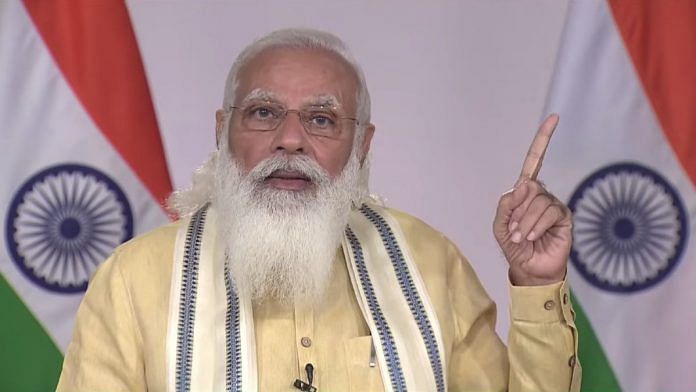New Delhi: The Narendra Modi government Tuesday announced the creation of a new ministry, named the Ministry of Cooperation to realise the vision of ‘Sahkar se Samriddhi’ or prosperity through cooperatives.
This is the second ministry to be created during the second term of the Modi government, after it came to power in 2019. The first new ministry to be established was the Jal Shakti ministry in 2019.
However, unlike the Ministry of Cooperation, it was created by integrating two existing ministries — water resources, river development and Ganga rejuvenation, and drinking water and sanitation.
ThePrint looks at how these new ministries are created.
Also read: Javadekar, Pokhriyal, RS Prasad, Harsh Vardhan — why Modi govt dropped big names from Cabinet
Who creates ministries?
A ministry in the Government of India essentially overlooks one subject and comprises employed officials such as civil servants who oversee its functioning. Most major ministries are headed by a Cabinet Minister.
Cumulatively, all cabinet ministers, ministers of state and the ministers of state who have an independent charge are called the ‘Council of Ministers‘ that aids the Prime Minister in governance. Some ministries also have subdivisions that are called departments.
Ministries or departments are created by the President on advice of the Prime Minister under the Government of India (Allocation of Business Rules) 1961, which is part of Article 77 of the Constitution.
Under these rules, each ministry is assigned a minister by the President on the advice of the Prime Minister. Each department in the ministry is generally under the charge of a civil servant or official who assists the minister on policy matters and general administration.
With this new ministry, there are 41 ministries at present in the Government of India.
The Cabinet Secretariat is responsible for coordination, smooth transaction of business and decision-making among ministries and departments and is under the direct charge of the PM.
Also read: Maratha face, Shiv Sena critic, Konkan strongman — why BJP picked Rane for Union Cabinet
Total ministers cannot exceed 15% of Lok Sabha strength
According to former union cabinet secretary K.M. Chandrasekhar, it is normal practice to create new ministries, disband old ones or merge ministries.
“The composition can be changed according to the government, wherever they feel a particular area requires more focus. However there is a restriction for the total number of ministers by a constitutional provision,” Chandrasekhar told ThePrint.
He further noted that for a country like India, which has such a large population, many ministries were required and it was up to the government to gauge if a new ministry is required.
He added that creation of a new ministry was not a difficult task.
However, under the 91st Constitutional Amendment Act, 2003, the total number of ministers in the Council of Ministers, including the PM, cannot exceed 15 per cent of the total members of the Lok Sabha. At present, the Lok Sabha has 543 members and 15 per cent of that is approximately 81.
The creation of ministries is also not new. In 2000, the Ministry of Youth Affairs and Sports, which is now headed by Kiren Rijiju, was created.
Another example was the creation of the Ministry of Skill Development and Entrepreneurship in 2014.
In 2017, the Modi government merged two ministries — urban development, and housing and urban poverty alleviation — to create the Ministry of Housing and Urban Affairs.
First Cabinet in India
India’s first cabinet was formed on 15 August 1947 and had a total of 18 ministries that were overseen by 14 Cabinet Ministers.
Jawaharlal Nehru, the first prime minister of India, took additional charge of the Ministry of External Affairs and Commonwealth Relations and the Ministry of Scientific Research.
Then deputy PM Sardar Vallabhai Patel, meanwhile, had additional charge over the home and information and broadcasting ministries.
Also read: What are cooperatives & how a new ministry set up amid Modi govt reshuffle will help



